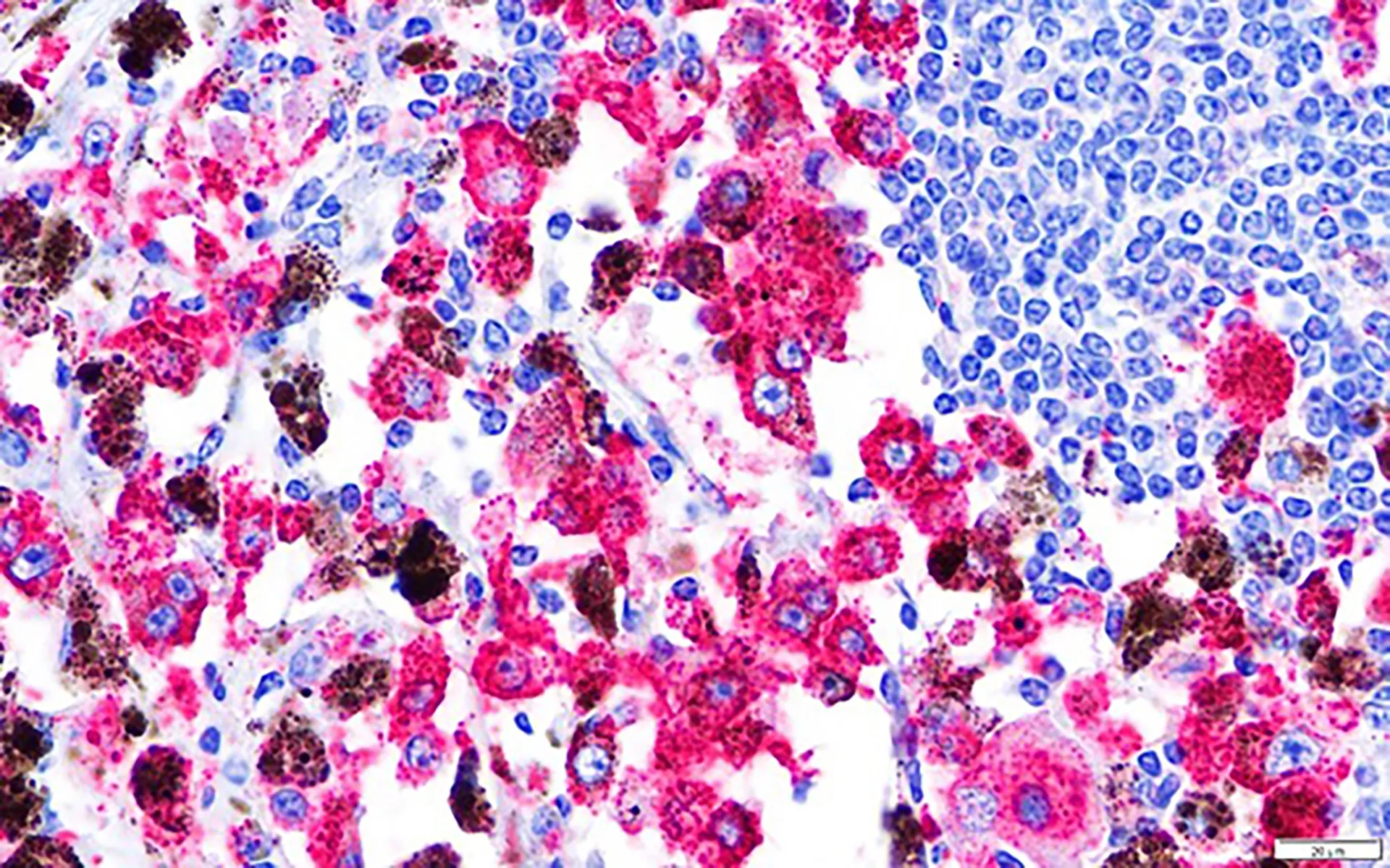Diffuse melanosis secondary to metastatic melanoma in a Nelore bull
DOI:
https://doi.org/10.24070/bjvp.1983-0246.v14i3p191-198Keywords:
Malignant melanoma, diffuse melanosis, immunohistochemistry, diseases of cattleAbstract
We report a case of diffuse melanosis secondary to metastatic malignant melanoma in a Nelore bull. Clinical signs included isolation from the herd, epistaxis, hyperthermia, pale ocular membranes, mucoid diarrhea and dark urine. Despite anti-inflammatory and antibiotic therapy, the bull died 45 days after the onset of the clinical signs. The most striking lesion was diffuse black discoloration to the visceral organs including liver, spleen, lungs, lymph nodes, and kidneys; all these affect organs were moderately enlarged”. The urine was black. Histologically, 50-80% of the parenchyma of the liver, spleen and lymph nodes was obliterated by aggregates of melanin-loaded neoplastic melanocytes. Those neoplastic cells also occurred within capillaries of the liver, spleen, lymph nodes, urinary bladder, lungs and kidneys. Immunohistochemistry of neoplastic melanocytes was positive for Melan A and PNL2 markers. Abundant brown to black pigment was found in melanophages in the lungs, confirmed by IBA1 immunohistochemistry.


